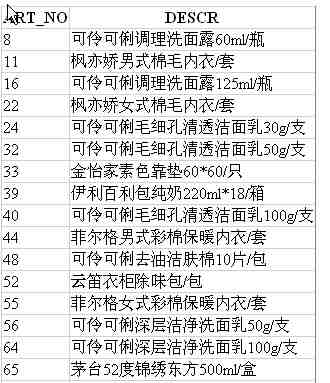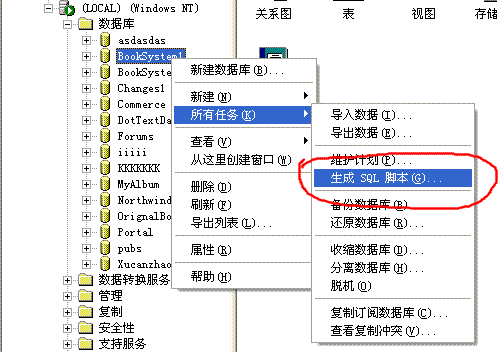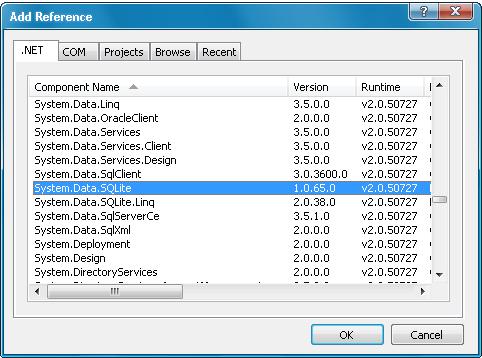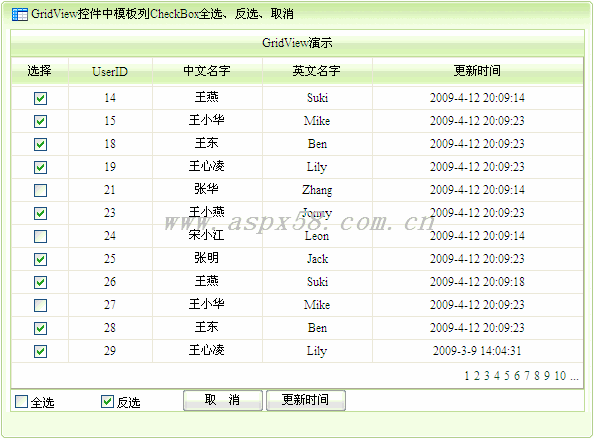|
|
本文假設 URL: http://localhost/mywebservices/updownload.asmx
共有 4 個程序文件 (Web.Config 就不贅述了)
Server Side:
標題中所提到的 "異步" 其實在服務器端的程序并沒有什么特殊的,而主要是通過客戶端應用程序
異步調用相關 Web Method 實現的!
1. updownload.asmx ,位于 IIS 的某個 Web 共享目錄,代碼如下,只有一句話:
<%@ WebService Language="c#" Codebehind="UpDownLoad.asmx.cs" Class="Service1" %>
2. updownload.asmx.cs ,即: updownload.asmx 的 Codebehind ,位于 IIS 的某個 Web 共享目錄的 bin 子目錄下,代碼如下:
/*
本文件位于 Web 共享目錄的 bin 子目錄下,通過執行如下命令行編譯:
csc /t:library updownload.asmx.cs
*/
using System.Diagnostics;
using System.Web;
using System.Web.Services;
using System.IO;
using System;
public class Service1 : System.Web.Services.WebService
{
[WebMethod]
public string HelloWorld()
{
return "Hello World";
}
//從 Web Method 本身,其實看不出 "同步" 還是 "異步"
[WebMethod(Description = "為了支持多點分塊異步上傳文件,此方法必須由客戶端預先調用,以便在服務器端生成指定 FileName 和 Length 大小的空白文件預定空間! 建議客戶端同步調用")]
public string CreateBlankFile(string FileName,int Length) //建議由客戶端同步調用
{
FileStream fs = new FileStream(Server.MapPath(".") + "http://" + FileName, FileMode.OpenOrCreate, FileAccess.ReadWrite, FileShare.None);
fs.Write(new byte[Length], 0, Length);
fs.Close();
fs = null;
return FileName + " (" + Length + ") 空白文件已經創建!";
}
[WebMethod(Description = "提供一個用于一次完整上傳整個文件的方法! 建議客戶端同步調用")]
public string UploadFileBytes(byte[] Bytes,string FileName)
{
return UploadFileChunkBytes(Bytes, 0, FileName);
}
[WebMethod(Description = "提供一個用于一次只上傳由 Position 位置起始的, Bytes 字節的 FileName 文件塊存入服務器端相應文件的相應字節位置! 建議客戶端異步調用")]
// 這里只要多提供一個 Position 參數,余下的再由客戶端調用異步的該方法,就輕松達到目的了!
public string UploadFileChunkBytes(byte[] Bytes,int Position,string FileName)
{
try
{
FileStream fs = new FileStream(Server.MapPath(".") + "http://" + FileName, FileMode.OpenOrCreate, FileAccess.ReadWrite, FileShare.ReadWrite);
//該 Bytes 的字節要寫到 服務器端 相應文件的從 Position 開始的字節
fs.Position = Position;
fs.Write(Bytes, 0, Bytes.Length);
fs.Close();
fs = null;
return FileName + " 文件塊: 位置[" + Position + "," + (Position + Bytes.Length) + "] 大小(" + Bytes.Length + ") 上傳成功!";
}
catch (Exception e)
{
return e.Message;
}
}
[WebMethod]
public byte[] DownloadFileBytes(string FileName)
{
if (File.Exists(FileName))
{
try
{
FileStream fs = File.OpenRead(FileName);
int i = (int) fs.Length;
byte[] ba = new byte[i];
fs.Read(ba,0,i);
fs.Close();
return ba;
}
catch
{
return new byte[0];
}
}
else
{
return new byte[0];
}
}
}
//=======================================================================
Client Side:
3. UpDownloadProxy.cs :
本文件由如下命令生成
% Visual Studio .NET 2003 安裝目錄下的 %/SDK/v1.1/Bin/wsdl.exe
具體命令行如下:
wsdl.exe /l:CS /out:UpDownloadProxy.cs http://localhost/MyWebServices/updownload.asmx?wsdl
生成的本地的客戶端代理類代碼里已經為每個 Web Method 生成了可異步和同步執行的方法,例如:
public string HelloWorld() {}
public System.IAsyncResult BeginHelloWorld(...) {}
public string EndHelloWorld(...) {}
下面是該命令行生成的完整的 UpDownloadProxy.cs 代碼,就不修改了:
/*
通過執行如下命令行編譯,生成 UpDownloadProxy.dll :
csc /t:library UpDownloadProxy.cs
*/
//------------------------------------------------------------------------------
// <autogenerated>
// This code was generated by a tool.
// Runtime Version: 1.1.4322.573
//
// Changes to this file may cause incorrect behavior and will be lost if
// the code is regenerated.
// </autogenerated>
//------------------------------------------------------------------------------
//
// 此源代碼由 wsdl, Version=1.1.4322.573 自動生成。
//
using System.Diagnostics;
using System.Xml.Serialization;
using System;
using System.Web.Services.Protocols;
using System.ComponentModel;
using System.Web.Services;
/// <remarks/>
[System.Diagnostics.DebuggerStepThroughAttribute()]
[System.ComponentModel.DesignerCategoryAttribute("code")]
[System.Web.Services.WebServiceBindingAttribute(Name="Service1Soap", Namespace="http://tempuri.org/")]
public class Service1 : System.Web.Services.Protocols.SoapHttpClientProtocol {
/// <remarks/>
public Service1() {
this.Url = "http://localhost/MyWebServices/updownload.asmx";
}
/// <remarks/>
[System.Web.Services.Protocols.SoapDocumentMethodAttribute("http://tempuri.org/HelloWorld", RequestNamespace="http://tempuri.org/", ResponseNamespace="http://tempuri.org/", Use=System.Web.Services.Description.SoapBindingUse.Literal, ParameterStyle=System.Web.Services.Protocols.SoapParameterStyle.Wrapped)]
public string HelloWorld() {
object[] results = this.Invoke("HelloWorld", new object[0]);
return ((string)(results[0]));
}
/// <remarks/>
public System.IAsyncResult BeginHelloWorld(System.AsyncCallback callback, object asyncState) {
return this.BeginInvoke("HelloWorld", new object[0], callback, asyncState);
}
/// <remarks/>
public string EndHelloWorld(System.IAsyncResult asyncResult) {
object[] results = this.EndInvoke(asyncResult);
return ((string)(results[0]));
}
/// <remarks/>
[System.Web.Services.Protocols.SoapDocumentMethodAttribute("http://tempuri.org/CreateBlankFile", RequestNamespace="http://tempuri.org/", ResponseNamespace="http://tempuri.org/", Use=System.Web.Services.Description.SoapBindingUse.Literal, ParameterStyle=System.Web.Services.Protocols.SoapParameterStyle.Wrapped)]
public string CreateBlankFile(string FileName, int Length) {
object[] results = this.Invoke("CreateBlankFile", new object[] {
FileName,
Length});
return ((string)(results[0]));
}
/// <remarks/>
public System.IAsyncResult BeginCreateBlankFile(string FileName, int Length, System.AsyncCallback callback, object asyncState) {
return this.BeginInvoke("CreateBlankFile", new object[] {
FileName,
Length}, callback, asyncState);
}
/// <remarks/>
public string EndCreateBlankFile(System.IAsyncResult asyncResult) {
object[] results = this.EndInvoke(asyncResult);
return ((string)(results[0]));
}
/// <remarks/>
[System.Web.Services.Protocols.SoapDocumentMethodAttribute("http://tempuri.org/UploadFileBytes", RequestNamespace="http://tempuri.org/", ResponseNamespace="http://tempuri.org/", Use=System.Web.Services.Description.SoapBindingUse.Literal, ParameterStyle=System.Web.Services.Protocols.SoapParameterStyle.Wrapped)]
public string UploadFileBytes([System.Xml.Serialization.XmlElementAttribute(DataType="base64Binary")] System.Byte[] Bytes, string FileName) {
object[] results = this.Invoke("UploadFileBytes", new object[] {
Bytes,
FileName});
return ((string)(results[0]));
}
/// <remarks/>
public System.IAsyncResult BeginUploadFileBytes(System.Byte[] Bytes, string FileName, System.AsyncCallback callback, object asyncState) {
return this.BeginInvoke("UploadFileBytes", new object[] {
Bytes,
FileName}, callback, asyncState);
}
/// <remarks/>
public string EndUploadFileBytes(System.IAsyncResult asyncResult) {
object[] results = this.EndInvoke(asyncResult);
return ((string)(results[0]));
}
/// <remarks/>
[System.Web.Services.Protocols.SoapDocumentMethodAttribute("http://tempuri.org/UploadFileChunkBytes", RequestNamespace="http://tempuri.org/", ResponseNamespace="http://tempuri.org/", Use=System.Web.Services.Description.SoapBindingUse.Literal, ParameterStyle=System.Web.Services.Protocols.SoapParameterStyle.Wrapped)]
public string UploadFileChunkBytes([System.Xml.Serialization.XmlElementAttribute(DataType="base64Binary")] System.Byte[] Bytes, int Position, string FileName) {
object[] results = this.Invoke("UploadFileChunkBytes", new object[] {
Bytes,
Position,
FileName});
return ((string)(results[0]));
}
/// <remarks/>
public System.IAsyncResult BeginUploadFileChunkBytes(System.Byte[] Bytes, int Position, string FileName, System.AsyncCallback callback, object asyncState) {
return this.BeginInvoke("UploadFileChunkBytes", new object[] {
Bytes,
Position,
FileName}, callback, asyncState);
}
/// <remarks/>
public string EndUploadFileChunkBytes(System.IAsyncResult asyncResult) {
object[] results = this.EndInvoke(asyncResult);
return ((string)(results[0]));
}
/// <remarks/>
[System.Web.Services.Protocols.SoapDocumentMethodAttribute("http://tempuri.org/DownloadFileBytes", RequestNamespace="http://tempuri.org/", ResponseNamespace="http://tempuri.org/", Use=System.Web.Services.Description.SoapBindingUse.Literal, ParameterStyle=System.Web.Services.Protocols.SoapParameterStyle.Wrapped)]
[return: System.Xml.Serialization.XmlElementAttribute(DataType="base64Binary")]
public System.Byte[] DownloadFileBytes(string FileName) {
object[] results = this.Invoke("DownloadFileBytes", new object[] {
FileName});
return ((System.Byte[])(results[0]));
}
/// <remarks/>
public System.IAsyncResult BeginDownloadFileBytes(string FileName, System.AsyncCallback callback, object asyncState) {
return this.BeginInvoke("DownloadFileBytes", new object[] {
FileName}, callback, asyncState);
}
/// <remarks/>
public System.Byte[] EndDownloadFileBytes(System.IAsyncResult asyncResult) {
object[] results = this.EndInvoke(asyncResult);
return ((System.Byte[])(results[0]));
}
}
//=======================================================================
4. UpDownloadClient.cs :
該程序才是真正實現文件分塊多點異步上傳的核心代碼:
/*
通過執行如下命令行編譯:
csc updownloadClient.cs /r:updownloadproxy.dll
*/
using System;
using System.IO;
public class Class1
{
static void Main(string[] args)
{
//Download(ServerSidepath, ClientSidePath)
Download(@"e:/test.jpg", @"f:/test_local.jpg");
System.Console.WriteLine("down End");
System.Console.WriteLine("同步 up file exec ...");
UploadFile(@"e:/Northwind.mdb");
System.Console.WriteLine("同步 up file End/n");
System.Console.WriteLine("異步 up chunks exec ...");
UploadFileChunks(@"e:/test.rar", 64);
System.Console.ReadLine();
}
public static void UploadFile(string LocalFileName)
{
Service1 xx = new Service1();
FileStream fs = new FileStream(LocalFileName, FileMode.Open); //Client Side Path
byte[] buffer = new byte[fs.Length];
fs.Read(buffer, 0, buffer.Length);
//調用 "同步執行" 的本地 Web Sevices 代理類的 方法,相當于同步調用了 Web Method !
xx.UploadFileBytes(buffer, System.IO.Path.GetFileName(LocalFileName));
}
//指定要上傳的本地文件的路徑,及每次上傳文件塊的大小
public static void UploadFileChunks(string LocalFileName,int ChunkSize)
{
Service1 xx = new Service1();
string filename = System.IO.Path.GetFileName(LocalFileName);
FileStream fs = new FileStream(LocalFileName, FileMode.Open); //Client Side Path
//fs = File.OpenRead(LocalFileName);
int r = (int) fs.Length; //用于記錄剩余還未上傳的字節數,初值是文件的大小
//調用 "同步執行" 的本地 Web Sevices 代理類的 方法,相當于同步調用了 Web Method !
//預定服務器端空間
xx.CreateBlankFile(filename,r);
int size = ChunkSize * 1024;
int k = 0; //用于記錄已經上傳的字節數
i++; //用于記錄上傳的文件塊數
while (r >= size)
{
byte[] buffer = new byte[size];
fs.Read(buffer,0,buffer.Length);
//調用 "異步執行" 的本地 Web Sevices 代理類的 方法,相當于異步調用了 Web Method !
//該 buffer 的字節要寫到 服務器端 相應文件的從 Position = k 開始的字節
xx.BeginUploadFileChunkBytes(buffer,k,filename,new AsyncCallback(UploadFileChunkCallback),xx);
k += size;
r -= size;
i++;
}
if (r > 0) //剩余的零頭
{
byte[] buffer = new byte[r];
fs.Read(buffer,0,buffer.Length);
//調用 "異步執行" 的本地 Web Sevices 代理類的 方法,相當于異步調用了 Web Method !
//該 buffer 的字節要寫到 服務器端 相應文件的從 Position = k 開始的字節
xx.BeginUploadFileChunkBytes(buffer,k,filename,new AsyncCallback(UploadFileChunkCallback),xx);
i++;
}
fs.Close();
}
private static int i = -1; //用于記錄上傳的文件塊數
private static void UploadFileChunkCallback(IAsyncResult ar)
{
Service1 x = (Service1) ar.AsyncState;
Console.WriteLine(x.EndUploadFileChunkBytes(ar));
if ( --i == 0)
{
Console.WriteLine("異步 up all chunks end");
}
}
public static void Download(string ServerSideFileName,string LocalFileName)
{
Service1 xx = new Service1();
byte[] ba = xx.DownloadFileBytes(ServerSideFileName); //Server Side Path
FileStream fs = new FileStream(LocalFileName, FileMode.Create); //Client Side Path
fs.Write(ba,0,ba.Length);
fs.Close();
}
}
//===========================================================================
至此我們通過純手工的方式完成了任務,之所以不用 VS 就是為了讓碼子簡潔明了!
Microshaoft .Night 就是這么平易近人! (PMPMP to MS)
通過 Web Sevices 上傳文件非常簡單,甚至比傳統的 http Web 上傳還簡單!
同時較輕松地就實現了文件分塊多點異步上傳:
Server 端代碼沒啥特殊的!
Client 端代碼稍微復雜些!
AspNet技術:asp.net下實現支持文件分塊多點異步上傳的 Web Services,轉載需保留來源!
鄭重聲明:本文版權歸原作者所有,轉載文章僅為傳播更多信息之目的,如作者信息標記有誤,請第一時間聯系我們修改或刪除,多謝。



